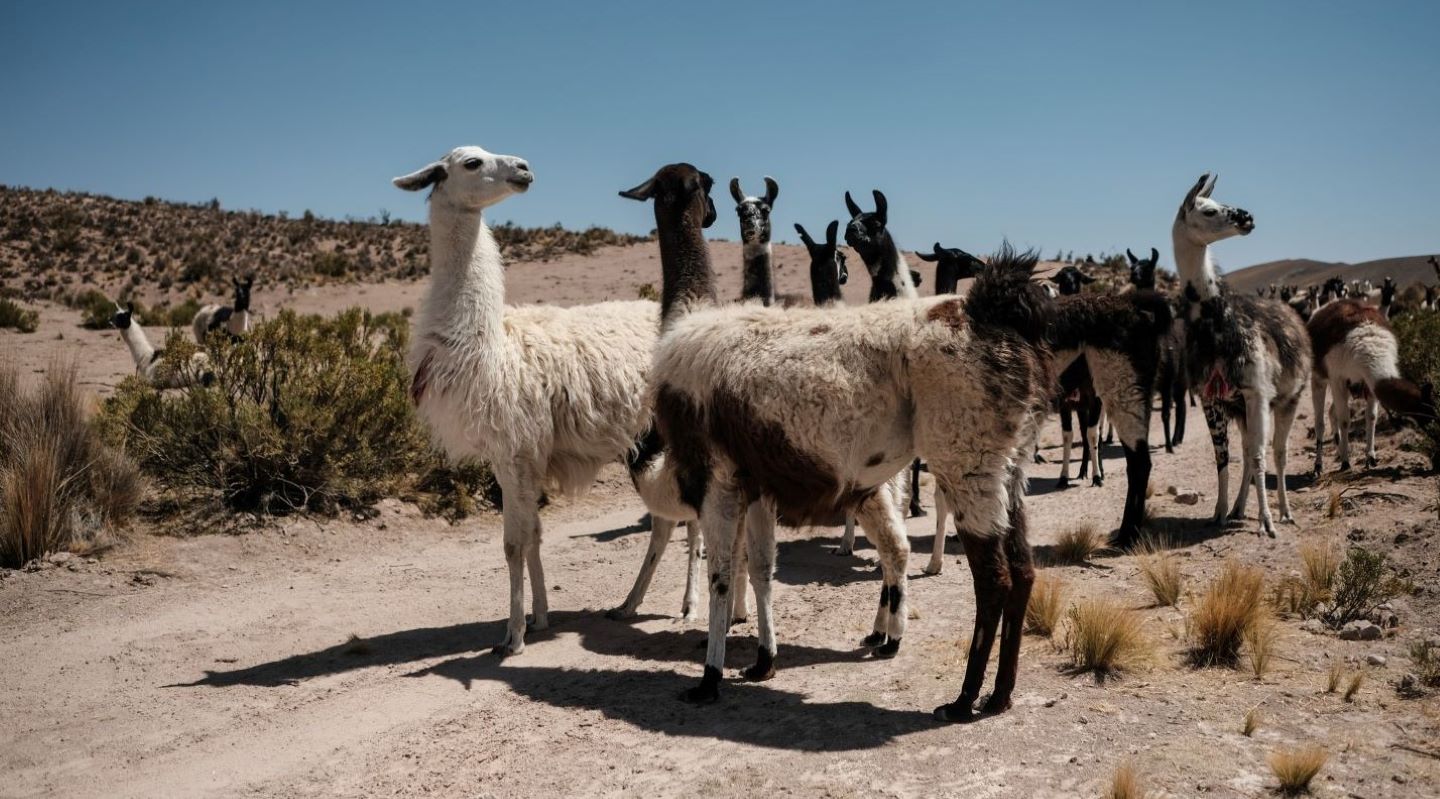Why camelids are key to a better future in Bolivia and beyond
IFAD Asset Request Portlet
Asset Publisher
Why camelids are key to a better future in Bolivia and beyond
Estimated reading time: 3 minutes
Camelids are fascinating creatures. This group of mammals includes camels and dromedaries as well as camelids native to South America, such as llamas, alpacas, vicuñas and guanacos. Each has an amazing ability to adapt and can be found in extreme and varied environments – from arid deserts to grassy plains and soaring highlands.
They are also more sustainable and climate resilient than many other livestock. Camelids are not ruminants, so they produce much less methane than cows and sheep, for example, and prefer tougher grasses that grow in arid conditions. Moreover, they are known for being able to survive for long periods without water.
Camelids have lived among rural people for centuries, providing an important source of meat, milk, material (like wool), mode of transport and money when they are sold. Millions of people depend on camelids for these essentials, and many celebrate them as an important part of their cultural identity.
Despite their importance, camelids are often underfunded in rural development. As we kick off the International Year of Camelids, I hope that by the time 2025 comes around, more people will appreciate their economic and cultural importance.

IFAD invests in camelid farmers in Bolivia…
As IFAD’s Country Director for Bolivia, I have seen firsthand how these resilient creatures can transform communities. That’s why, for almost three decades, IFAD has been supporting small-scale camelid producers in the country.
Starting with the Camelid Producers Development Project in the Andean High Plateau Project in 1995, IFAD provided technology, training and financial services to 15,000 camelid rearing families. A decade later, the Enhancement of the Peasant Camelid Economy Support Project invested in an additional 16,000 families focusing on adding value to camelid products, like meat and leather.
More recently, the Indigenous Peoples’ Award-winning PRO-CAMELIDOS project incorporated the lessons learned from the two previous projects to support more than 18,000 rural households with investments to increase their productivity, improve their nutrition and start saving.
…and the results speak for themselves.
In the early 1990s, the production of llama wool in Bolivia was in its infancy. Now, the country supplies almost 500 tons each year according to PROCAMELIDOS.
When it comes to camelid meat, the market has grown from US$4.1 million per year in 2004 to as much as US$32 million in 2022 – an incredible eightfold increase in under two decades. This growth is, in part, attributable to the growing popularity of dried llama meat, known as charque. Thanks to llama meat’s high protein and iron content, charque is promoted through public subsidy programmes targeting pregnant and breastfeeding women.
In addition to providing much-needed financing, IFAD worked with the Bolivian government to develop health and quality standards so that llama-based products can be sold in other markets. This resulted in a huge boost to the livelihoods of thousands have rural families.

What’s next for camelids?
More people are beginning to appreciate these incredible creatures – and not just in Bolivia. According to FAO, over the past two decades, the global population of Bactrian camels and dromedary camels has almost doubled!
The camelid sector can accelerate progress towards achieving the Sustainable Development Goals, including eradicating hunger and poverty, while improving climate resilience. But to do this, small-scale rural camelid producers need more support and investment.
The camelids will take care of the rest.
Spread the word about these amazing creatures.
